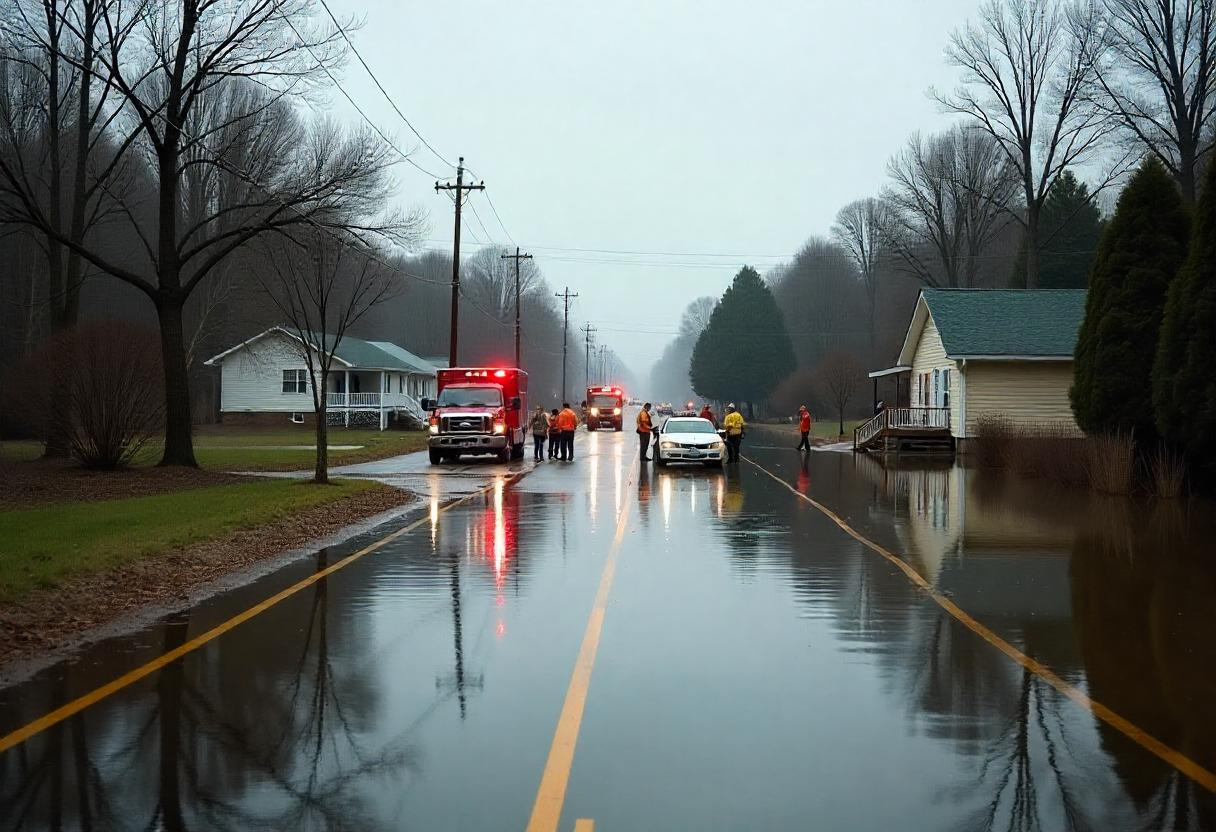Cocke County, Tennessee, has witnessed devastating floods over the years, causing damage to homes, roads, and businesses. Nestled in the foothills of the Great Smoky Mountains, the region is vulnerable to heavy rainfall, river overflows, and flash flooding. As climate patterns shift, understanding the causes, impact, and recovery efforts related to Cocke County floods is more important than ever.
The History of Cocke County Floods
Flooding has been a recurring challenge for Cocke County. The county’s location near the Pigeon River and French Broad River makes it particularly susceptible to high water levels during periods of excessive rain.
Some of the most significant floods include:
- The 2004 Flood: Heavy rainfall from remnants of hurricanes caused riverbanks to overflow, damaging infrastructure.
- The 2011 Flash Floods: Sudden storms led to rapid flooding, stranding residents and washing away roads.
- The 2020 Floods: Torrential rain triggered landslides and severe property damage.
Each of these events left lasting impacts on the community, requiring extensive recovery efforts.
Causes of Cocke County Floods
Several natural and human-induced factors contribute to flooding in Cocke County.
Heavy Rainfall and Storms
The county experiences significant precipitation, especially during storm seasons. When rain falls faster than the ground can absorb, runoff accumulates, leading to flooding.
River Overflow
Cocke County is intersected by multiple rivers. When excessive rain falls upstream, water levels rise, spilling over riverbanks and into populated areas.
Deforestation and Land Use Changes
Clearing trees for development reduces natural water absorption. Without vegetation to slow water movement, floods become more frequent and severe.
Climate Change Effects
Increased temperatures contribute to more extreme weather events, including heavier rainfall and prolonged storms, exacerbating the risk of flooding.
The Impact of Cocke County Floods
Floods bring widespread destruction, affecting residents, businesses, and the environment.
Damage to Homes and Infrastructure
- Roads become impassable due to erosion and debris accumulation.
- Homes suffer from water damage, requiring costly repairs.
- Bridges weaken, creating safety hazards for travelers.
Economic Losses
- Businesses close temporarily or permanently due to flood damage.
- Agricultural lands are submerged, leading to crop and livestock losses.
- Emergency services allocate significant funds for disaster response.
Environmental Consequences
- Riverbanks erode, disrupting ecosystems.
- Water contamination increases due to sewage and chemical spills.
- Wildlife habitats are destroyed, forcing animals to relocate.
Health and Safety Concerns
- Standing water promotes mosquito breeding, leading to disease outbreaks.
- Contaminated drinking water poses a serious health risk.
- Mold growth in flooded homes triggers respiratory issues.
Preparedness and Safety Measures
While floods cannot always be prevented, proper preparation can minimize risks.
Before a Flood
- Stay Informed: Sign up for local weather alerts and emergency notifications.
- Create an Emergency Plan: Establish evacuation routes and designate meeting points for family members.
- Prepare an Emergency Kit: Include bottled water, non-perishable food, flashlights, batteries, and essential documents.
- Install Flood Barriers: Use sandbags and water-resistant materials to protect property.
During a Flood
- Avoid Flooded Areas: Never attempt to drive or walk through floodwaters.
- Move to Higher Ground: Seek shelter in elevated locations if evacuation is necessary.
- Listen to Authorities: Follow official instructions regarding evacuation and road closures.
After a Flood
- Inspect Damage Safely: Wait for clearance before entering flood-damaged buildings.
- Clean and Disinfect: Remove contaminated items and dry affected areas to prevent mold.
- Seek Assistance: Contact disaster relief organizations for support with recovery efforts.
Emergency Response and Recovery Efforts
Following major floods, Cocke County has relied on coordinated relief efforts to help residents rebuild.
Local Government Actions
- Emergency response teams provide rescue operations and medical assistance.
- Damage assessments determine the extent of destruction.
- Infrastructure repairs are prioritized to restore transportation networks.
Community Support and Relief Organizations
- Volunteers assist in distributing supplies and rebuilding efforts.
- Local charities and nonprofits provide food, shelter, and financial aid.
- Churches and civic groups offer emotional and psychological support to affected families.
State and Federal Assistance
- FEMA provides financial relief and temporary housing for displaced families.
- The National Guard deploys personnel to assist in flood response.
- Grants and low-interest loans help businesses and homeowners recover.
Long-Term Solutions for Flood Prevention
To mitigate future flooding, Cocke County is investing in long-term solutions.
Improved Infrastructure
- Stronger levees and floodwalls are being constructed along major waterways.
- Upgraded drainage systems prevent urban flooding during heavy rains.
Environmental Conservation
- Reforestation projects help absorb excess rainfall and reduce runoff.
- Wetland restoration creates natural flood barriers that protect communities.
Stricter Zoning and Building Regulations
- New developments are being designed with flood-resistant materials.
- Construction near flood-prone areas is being restricted.
Public Awareness Campaigns
- Educational programs teach residents about flood risks and emergency preparedness.
- Schools incorporate flood safety into their curriculum to instill awareness from a young age.
Also read: Hoedown Hill: A Hidden Winter Getaway
Conclusion
Cocke County floods have left lasting impacts on the community, but through resilience and preparedness, residents continue to rebuild and adapt. Understanding the causes, staying informed, and taking proactive safety measures can help mitigate future disasters. As efforts to improve infrastructure and promote environmental conservation continue, the county remains committed to reducing the effects of flooding and ensuring the safety of its people.
FAQs
What causes Cocke County floods?
Heavy rainfall, river overflows, deforestation, and climate change all contribute to flooding in the area.
How often does flooding occur in Cocke County?
Major floods have occurred multiple times in the past two decades, with smaller-scale flooding happening more frequently.
What should residents do to stay safe during a flood?
They should monitor weather alerts, evacuate when advised, avoid floodwaters, and have an emergency plan in place.
Is flood insurance necessary in Cocke County?
Yes, homeowners in flood-prone areas are encouraged to purchase flood insurance to cover potential damages.
What organizations help with flood recovery?
FEMA, the Red Cross, local charities, and community volunteers assist with disaster relief and rebuilding efforts.
How can future floods be prevented in Cocke County?
Stronger infrastructure, reforestation, better drainage systems, and stricter building regulations are key preventive measures.



